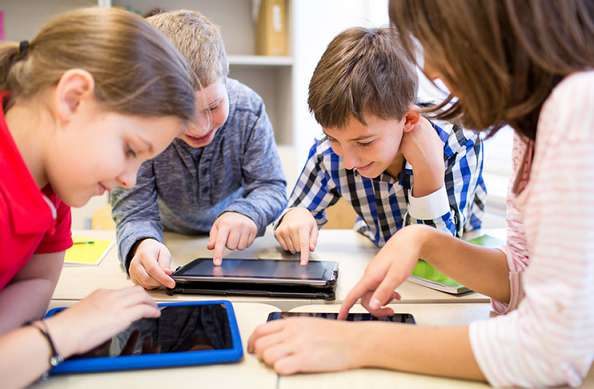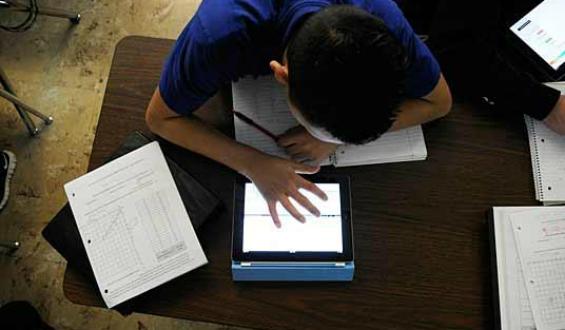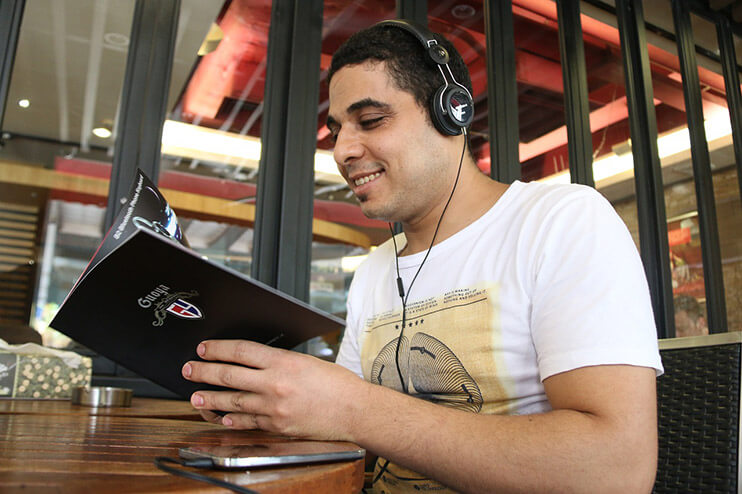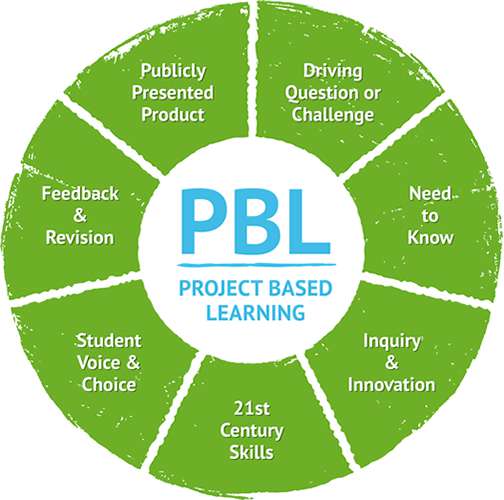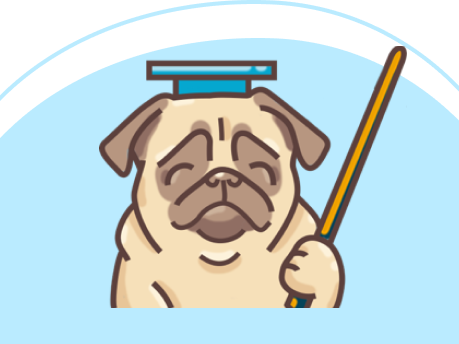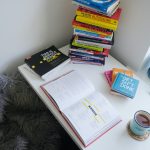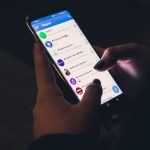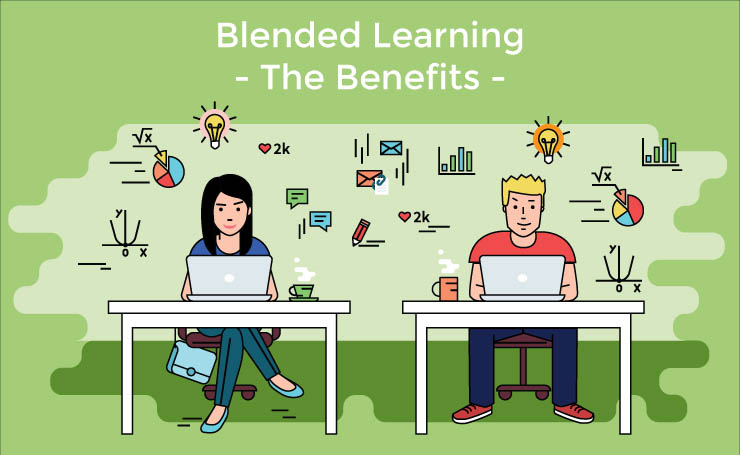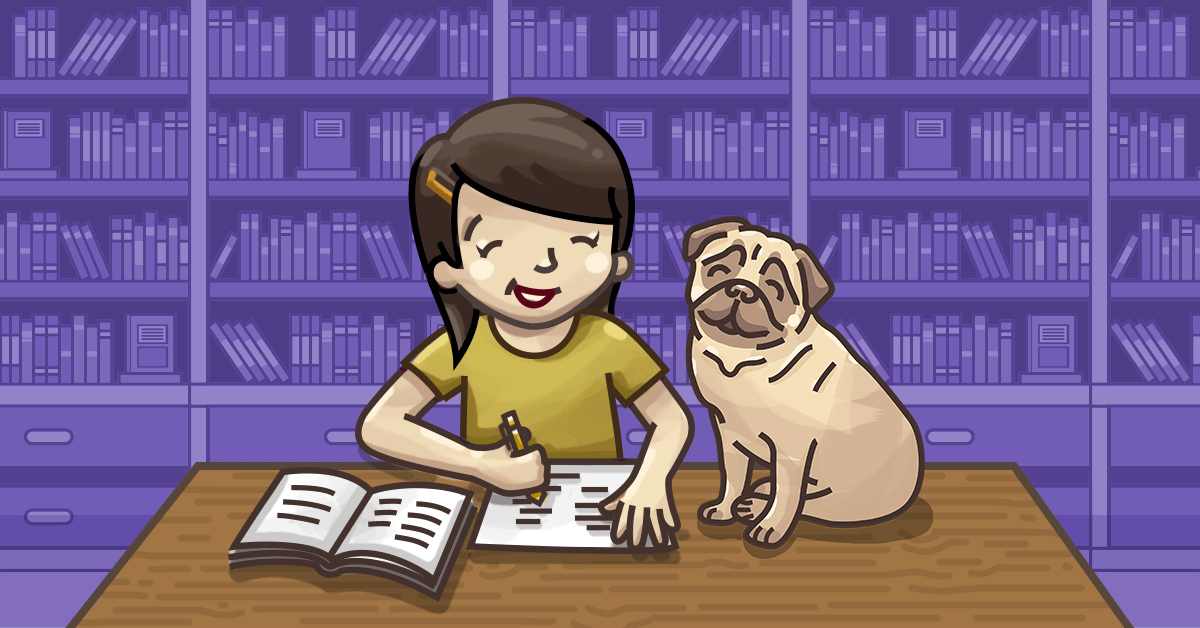Learning is a complex, but important, process that everyone must master to be successful. Interestingly, not everyone learns the same way or at the same pace. It is important to identify a learning method that works for you as early as possible in your school career because you’ll need it throughout your life as new tasks and information come your way.
Education experts have identified four separate learning styles: visual, auditory, read and write, and kinesthetic (or physical). These four styles are sometimes collectively known as VARK learning. Your own learning style may match one of these categories perfectly or it may be a combination of two styles of more. When it comes to learning, there is no right or wrong, good or bad. It is simply a matter of determining which learning style or which combination works best to help you learn and then exploring the learning techniques which fit best with your style.
-
What is visual learning?
-
What is kinesthetic learning?
-
What is read and write learning?
-
What is auditory learning?
-
What is personalized learning?
In this article, we will be exploring all the different learning styles mentioned above and also take a look at personalized learning, which does not work as well in traditional education system you are most likely more acquainted with. Hopefully, you will be able to identify which type of learning suits you best and move forward with the tips associated with that learning style so you can succeed in your studies. Let us first begin first with visual learning!
What is visual learning
Visual learners understand and retain information better when the ideas, words, and concepts are associated with images. Approximately 65 per cent of the population learns visually and are lucky that it is the predominant teaching style found in classrooms. They generally retain about 75 per cent of what they see, with analytic visual learners processing words before pictures, and global visual learners turning to graphics before words.
Characteristics of visual learners
As a visual learner, you may find that you:
- Love pictures and diagrams
- Doodle as you take notes
- Prefer to see words written down
- Create strong visual images in your mind when you read
- Attracted to spoken language that is rich in imagery
- Need to close your eyes to visualize something
- May need some thought before processing speeches or lectures
- Excel at reading maps or charts
- Have a good sense of direction because you can visualize maps and charts
- Like to read
- Is good at spelling
- Remembers faces better than names
- Is easily distracted by noise
- Look for something to watch when you get bored
- Notice details
- Like colour and fashion
- Enjoy visual art activities
- Have difficulty following verbal directions
Visual learning strategies
Visual learners generally retain about 75 per cent of information presented to them visually and they learn best alone. Visual learners need visual cues in front of them in order to solidify ideas and concepts in your minds. Today’s classrooms are often ideal for visual learning, because there are numerous visual aids: whiteboards, handouts, online learning videos, etc.
By employing strategies tailored to your visual learning style, you’ll learn more effectively. Here are some study tips for visual learners that should serve your needs:
- Keep your eyes on the lecturer; it will help you focus. In addition, the lecturer’s facial expressions and body language will provide you with more information.
- Sit away from windows and near the front of the room to minimize distractions.
- Ask the lecturer to repeat information or explain if you don’t understand.
- Try to visualize the lecture material as you hear it.
- When studying, choose a quiet place. If you need to be at the library, wear earplugs or earmuffs.
- Take lots of notes and record many details as you study. Then, cover the notes and try to rewrite them to see what you remember.
- Use highlighters. Circle key words or underline them.
- Create flashcards for yourself and review them often. They can be especially effective in combination with graphs or charts, forcing you to name parts of the diagram or explain the function.
- Draw diagrams, charts, pictures or timelines for yourself or ask the teacher to create them for you.
- Seek out charts, maps, posters and software that will help you learn material visually.
- Replace words with symbols or initials. Associating a symbol with a concept may make it easier to remember.
- Colour code your notes. If you consistently highlight certain types of information with markers of certain colours, it will help you to visually organize the information in your mind.
- Watch videos that relate to the subject you’re studying. In our current day and age, there is an explosion of educational videos available online.
For visual learners to learn a task, rather than abstract or factual information, they prefer to see a demonstration. They do not like to simply jump in or follow written instructions. They learn by watching. For example, to learn how to dance a waltz, it would be helpful for them to see another couple execute the dance steps before taking on the challenge themselves. If you are a visual learner, try out the above tips to find that they will greatly improve your studying habits.
What is kinesthetic learning
Kinesthetic learners learn best when their bodies are active; action helps them cement information in their memories. It can be challenging for kinesthetic learners to succeed in the traditional classroom, according to writer Kelly Roell, because their bodies don’t consider listening as an activity. It is difficult for them to absorb the material being presented. They are generally successful at learning by doing, rather than by watching; muscle memory allows them to remember how to do something after doing it only once.
What is a kinesthetic learner
If you are a kinesthetic learner, it is likely you possess some of these traits:
- Excellent hand-eye co-ordination
- High energy levels
- Quick reaction times
- Skilled at assembling things, such as models or furniture
- Good at performing experiments
- Excellent muscle memory; can duplicate something after doing it once
- Talented at sports
- Becomes fidgety if required to sit for long periods; finds reasons to move
- Is not very attentive to auditory or visual presentations
- Movement helps concentration
- Gestures when speaking
- Tries things and likes to manipulate objects
- Enjoys action or adventure movies
Kinesthetic learning strategies
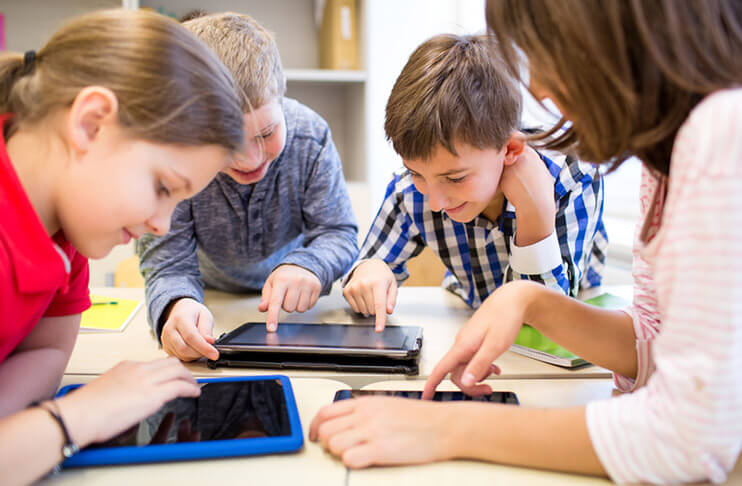
As a kinesthetic learner, you will likely find the traditional classroom setting to be challenging, since it requires sitting still for long periods of time and doesn’t cater to your kinesthetic learning style. If you are fortunate, instructors will accommodate your need for movement. Being aware of the conditions that help you learn best will allow you to work with your teachers to facilitate success.
For kinaesthetic learners, consider the following approaches to ensure success in the classroom and in studying afterward:
- Given a short attention span, it’s important to take frequent breaks while studying. This doesn’t equate to studying less than others; it simply means studying in shorter blocks of time and taking frequent, short, five-minute breaks.
- Examples, rather than plain facts, help kinesthetic learners retain material better. Science and math formulas are easy to illustrate with real life examples and the more relevant to daily life, the better. For other subjects, turn to case studies to get similar context.
- Join a study group. Kinesthetic learners enjoy discussions and they help consolidate information.
- Satisfy the need to do something with your hands while studying by squeezing a stress ball, tapping a pencil, or getting a fidget toy.
- For memorization, walk or pace around a room while using your notes or flashcards or reciting to yourself.
- Aid memorization by writing words in the air or on a surface with your finger. Picture the words in your mind as your write.
- Bounce a tennis ball against a wall as you answer study questions.
- Sitting at a desk may not be the best posture for you while studying. Consider lying on your back or your stomach or sitting in a bean bag chair.
- Underline or highlight as you read assigned materials.
- Colour can help focus your attention; try reading through coloured transparencies or covering your desk with coloured construction paper. Experiment to see if some colours work better for you than others.
- During classes, stand up if you find your mind is wandering. You may wish to alert the teacher first that you’ll be doing so.
- Tense and relax your muscles while sitting through a lecture. Keep your hands busy by wrapping and unwrapping a rubber band around your pen or pencil.
- Typing your notes on a computer can reinforce lessons through a sense of touch.
- Go for a walk or a run while listening to an audiotape of a lecture.
- Create flashcards for studying. Various areas of the brain become engaged through the act of writing out the information and flipping the cards over.
Educator Kirin Sinha is an advocate for kinesthetic learning. Kinesthetic learning connects the different ways in which we learn, she notes, “and this process enables a more effective understanding and retention of information.” she writes. “In kinesthetic learning, movement and action replace more passive forms of learning.
“No matter how much we memorize, recite, and study, our muscle memory seems to trump our brains alone. We learn best when we combine mind and body.”
Therefore, if kinesthetic learning is your natural learning style, you should have the advantage of being able to retain information for a long time once you learn it. Use this ability to your benefit.
What is read and write learning
Read-write learners prefer information that is displayed as words. The read-write learning style is one that many teachers prefer. Good reading and writing skills are sought after by employers, too. Read-write learners prefer all types of text-based input and output, including essays, books, the Internet and PowerPoint presentations – anything that focuses on words and more words.
Read-write learners succeed in traditional classrooms where the emphasis is on reading textbooks, taking notes and writing essay tests. They can be more independent than many other learners, because all they need is access to the necessary written information and they’re off and running.
Read write learners characteristics

If you are a read-write learner, you will have a particular read write learning style. Here are some of the traits you may possess:
- Prefers reading information to hearing or seeing it presented
- Enjoys reading
- Comprehends and remembers what is read
- Prefers reading themselves rather than hearing stories read aloud
- May enjoy writing
- May take extensive notes in class
- Won’t shy away from resources such as dictionaries and thesauruses
- Prefers to study alone to avoid distractions
- Works best in quiet places
- Learns best from teachers whose lectures are packed with information
- Able to translate abstract concepts into words and essays
Study tips for read write learners
Success in life depends, to a large extent, on acquiring the information you need to earn a living – along with the skills or interests that bring you joy. As a member of the read and write learners group, you will want to capitalize on your strengths as you learn the information you need to progress towards your goals.
Consider a mixture of the following techniques as you pursue your studies:
- Take copious notes in class — in your own words.
- Rewrite your notes to cement the information in your mind, but do so by re-reading, interpreting and writing it in your own words.
- Paraphrase the main ideas and principles to provide yourself with a deeper understanding. If you can’t explain a concept in your own words, it’s a sign that you don’t fully understand it.
- Write out the instructions for each step of a procedure or math problem.
- Create post-it notes or note cards with key information and place them in visible places, such as the mirror or in front of the sink.
- Hang onto handouts from class and incorporate them into your studying. The more written information you have that’s pertinent to the subject, the better.
- Write notes to yourself in the margins of handouts or on the printed copies of PowerPoint presentations.
- Create bullet-point lists from your notes. Condensing information into small, easy-to-digest bits puts it into an easy-to-read/review format.
- Turn these lists into multiple choice questions to test yourself.
- Make text-based flashcards to test your knowledge on important information you will need to know.
- Add words to all charts and diagrams. Turning the pictures into words will help you process the information better because you have added your own written explanation and will be more likely to remember it. During an exam, you will also be more likely to visualize important words rather than shapes or pictures.
- Be certain you understand all key terms. Use the glossary in your textbook, or even better, create your own. Defining terms in your own words will also aid in retention.
- Test your knowledge of key words and phrases by playing hangman with a classmate.
- Compare your notes to those of a classmate to ensure you haven’t missed anything.
Once you have mastered these strategies, be aware that your learning style may change over time. You may not find the read/write learning style to suit you as you progress on in life. It is also possible that your personal learning style is a mix of the major styles, so review the traits and strategies of the other styles to see if anything fits and adjust your approach accordingly.
What is auditory learning
Auditory learners learn best by actively learning: hearing information spoken or sung aloud and having the opportunity to ask questions. Approximately 30 per cent of school-age learners fit this style.
Auditory learners aren’t focused on taking notes in class. They absorb information by listening intently, but also want to discuss or question the information that has been imparted so they can be labeled as disruptive or disinterested. However, talking about what they have heard is simply a function of their learning style.
Auditory learners characteristics

If you are an auditory learner, here are some of the traits you may possess:
- Remembers what you say and hear
- May read slowly
- Follows spoken directions well
- Likes explaining and is good at doing so
- Enjoys oral reports, discussions and debates
- Can’t keep quiet for long periods of time
- Enjoys performing onstage
- Remembers names
- Enjoys music and may sing, hum or whistle to yourself
- Works well as a study group member
- Easily distracted by both noise and silence
- May find it difficult to interpret complex graphs or diagrams
- Expresses interest and enthusiasm verbally
Auditory learning strategies
If you identify yourself as an auditory learner, it’s important to play to your strengths so that you can absorb the information that comes your way. You want to employ study methods that allow you to hear information and repeat it aloud to accommodate for your auditory learning style. Try the following study tips for auditory learners as you attend classes or work on your homework:
- Set goals for your assignments and verbalize them orally.
- Ask questions in class, because it will require the instructor to put an idea into words or paraphrase the information and you will hear it. Participate in classroom discussions.
- Tape your lectures so you can replay them as needed, commenting when appropriate. Ensure that the instructor knows what you are doing and why so you are not accused of being disruptive.
- Recite information that you want to remember, repeating it several times aloud.
- Read out loud whenever possible, because hearing the material will help you to understand it.
- Create flashcards for material you want to learn and read them aloud repeatedly. Colour code them to make it even easier.
- Record the important points you want to learn for an exam and listen to the recording repeatedly.
- Use mnemonic devices to remember facts. Word association is an excellent tool.
- Study with others so you can talk about the information, allowing you to hear it again.
- When appropriate, ask your instructor/teacher if you can submit reports or papers as oral presentations or recordings.
Of course, it’s also important to nurture your abilities with other learning styles, which can be done through simple games. For example, boost your visual learning skills by reviewing shapes and colours; have someone prepare a tray of objects and ask someone to remove them, one at a time. It is your task to identify the missing objects. Improve physical skills by building something with LEGO or a kit.
However, you can also devise strategies for adding an audio component to lessons that focus on the visual and physical. For example, if you are required to learn dance steps, whisper each step to yourself as you move through the dance. If you can’t concentrate on a lecture that has slides accompanying it, keep your eyes on your notebook so you aren’t distracted.
What is personalized learning?
The personalized learning definition in technical terms describe it as the self-regulated tailoring of pedagogy, curricula, and learning environments by learners to meet their own needs. You can also say that it is a form of autodidacticism with more thought and care put into it.
Of course, the planning must be adequate but not excessive so that the learning actually goes underway and is not halted by too much planning and thinking of what to do and where to go. The personalized learning plan that is ultimately put into action needs a balance of planning and flexibility.
Most of the time, technology helps in facilitating this process, as well as the learning environments over the course of the process.
However, people can as easily do this with just pen and paper or even without. All of these parameters depend on your own needs, tendencies, and learning behaviors. This constitutes most of the planning process for personalized learning, so it is all about knowing what makes you tick and understand concepts most easily.
To put the process simply, you pick the subjects you need to learn and/or are interested in and go all the way with learning and becoming proficient at them.
It is best that you take subjects that are mostly related to each other so that you can combine them for your purposes, like writing and video editing so that you can make your own movies.
Learning Models
There are various personalized learning models that have come up over the years to help optimize the process. Many learning establishments have come up with their own, and it is worth taking a look at some of them. It seems these institutions seem to be focused more on children as they are the easiest to teach and mold.
EPiC Elementary School in Liberty, Missouri is a personalized project-based learning community that takes a lot from its name, with big ideas and an aim to always innovate. Its goal is to turn all learners into expert learners by empowering creativity with real tools.
They take kids from nothing to being builders and leaders, all the way to being designers and changemakers through their unique tiered studio system.
KM Explore is a k-5 elementary school in Wales, Wisconsin that is more about a generative curriculum grown from its community of learners, their families, and the educators. Its model focuses more on creating optimal learning spaces to facilitate collaborative teaching and learning.
The Vittra International Schools are 30 schools in Sweden that has thrown away the old-school classroom in favor of learning environments that foster children’s curiosity and creativity. There is much already said about the Swedish educational system, but Vittra takes it further by going for a more unorthodox and progressive approach.
There are many more establishments like these popping up all over the world, each with the motivation to create personalized learning environments that are all about fostering the love of learning instead of just getting high grades in everything without caring if students learned anything or not.
Strategies and Tools
In order to make the most of your learning experience, you should make use of certain strategies and tools to make things easier and more comprehensible. It is easy to get lost in the thick of the process, so having an overall strategy to keep you on the right track and tools to make it less chaotic and more conducive is very important for a learner.
A choice board is a simple tool that lets you track and plan your learning progress, make sense of ideas and concepts, and so on. It is a versatile tool wherein you take the idea behind an assignment or learning standard and create four choices that, if completed, will help you address it.
The best thing about it is you can use it as you go, so you do not have to waste too much time having to fiddle with it.
Project-based learning is a very good way to both learn and apply methods and techniques at the same time. Having an objective in the form of a finished product makes learning more engaging and helps the learner understand what each thing is for as it is applied to the project.
It also requires the learner to engage and communicate with others in order to complete the project, as well as do time and human management in ways that would be most effective and efficient.
Tiered learning targets lets you have reachable objectives at every level of learning you are in at the moment. Having goals that are too big can make learning less conducive and more confusing, while having goals that are either too few or too easy is a sure way to not learn as much as you could potentially have.
By breaking down your goals into chunks and arranging them by level of difficulty from the easiest to the most difficult, you can climb up that ladder and complete it.
Writing things down on paper is the ultimate method of both expression, assessment, and confirmation. Throughout your learning process, you should take notes, record your observations and insights through a journal, share your experiences with a blog, assess your progress with some quick write-ups, and so on.
The act of writing is a way for the brain to reconfirm acquired knowledge and apply new knowledge into your own ideas.
As for supplementary tools, there are none more effective and versatile at the moment than your mobile device. Whether you have a tablet or a smartphone, you can take photos and notes with it, install apps to accomplish different tasks related to your learning experience, read more material through ebooks, track your progress with something like a to-do app, and so on.
You might want to check it out; the best learning tool you can have may be in your pocket right now.
Assessments
There are two ways to assess your learning progress—formative and summative. Each has their strengths and weaknesses, both of which you should be aware of if you want to take your learning seriously.
The purpose of formative assessment is to inform and redirect knowledge and practice, provide immediate feedback for both mentor and learner, and provide useful data at a frequent and continuous interval. On the other hand, summative assessment is basically like a final exam that sums up everything you have learned throughout the whole process
The drawback to formative assessment is that it is time-consuming and requires a lot of attention in part of the mentor to make sure that the learner is on the right track. While it may seem easier to just use summative assessment in that regard, the problem with using it alone is that it assumes that the learning experience for all the students is a one-size-fits-all kind of thing, which is mostly untrue since everyone learns and functions differently.
The use of both in conjunction to facilitate the learning experience seems to be the best way to make sure that students pick up the curriculum well and actually get a good deal of knowledge and practical skill out of it.
As you can see, there are quite a few very different ways that different people may find helps them to learn best. It could even be that you recognize characteristics from several learning styles that we have covered. What is most important is to recognize what will help you succeed and build strategies to foster your type of learning. At StudyPug, you can find helpful notes and resources, as well as video lessons that can cater to different methods of learning. We welcome you to give us a try!
We hope this article helped you identify your learning style and we wish you all the best in the rest of your educational career!


